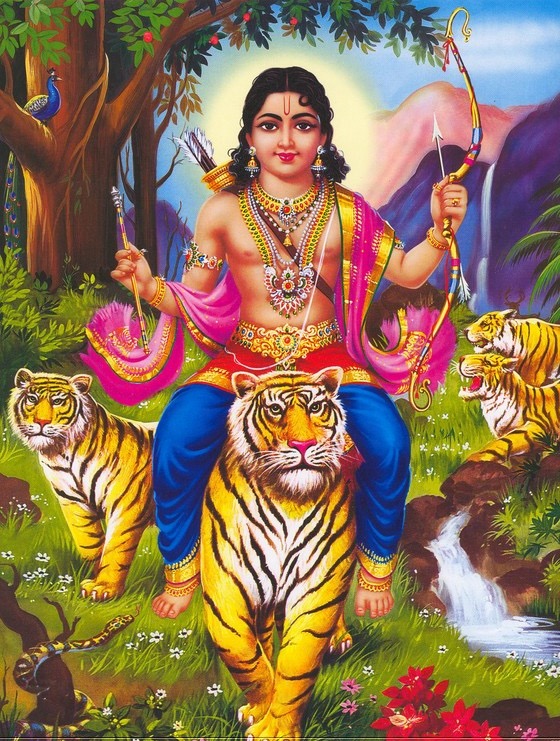 The Hindu God Ayyappan, also known as Hariharaputra, Hariharasuta, Dharmasashta, Manikanta, Ayyanar and Bhoothnath, is the son of Shiva, less well known than Ganesh and Kartikeya, but still very revered in southern India.
The Hindu God Ayyappan, also known as Hariharaputra, Hariharasuta, Dharmasashta, Manikanta, Ayyanar and Bhoothnath, is the son of Shiva, less well known than Ganesh and Kartikeya, but still very revered in southern India.
Like all the sons of Shiva, his conception and birth are also 'particular'. Ayyappan in fact was born from the union of Shiva with Mohini (literally "the enchantress") and that is with Vishnu in his representation of women.
We have already met Mohini when we talked about Samutramanthan, the "ocean shake". On that occasion Vishnu was transformed into this seductive beauty to recover the amrita, the nectar of immortality, which had been stolen by demons.
Well, even Shiva was not immune to the charm of Mohini and the excitement in seeing that beautiful goddess, Ayyappan was born.
One of the names of the god, as mentioned, is also Hariharaputra, which literally means son of Vishnu (Hari) and Shiva (Hara).
Ayyappan is a warrior deity and he is represented with a bow and arrow riding a tiger.
One of the many legends tells that the newborn son of Shiva was found by King Pantalam who raised him as a son and gave him the name of Manikantha.
Once he grew up, the king wanted to pass the kingdom to Manikantha, but the king's wife, instigated by an evil minister, was displeased with it because she wanted her biological son to become king.
To try and eliminate Manikhanta, the queen pretended to be ill and was told that only tiger milk could recover her. Then Manikantha went to the forest in the hope that he was eaten by the tiger. Instead the boy returned riding a big tiger!
Pantalam understood then that the boy had divine nature and decided to build a temple in his honor. To choose the place where to build the temple, Manikhanta flung with his bow an arrow that fell to the ground after traveling thirty kilometers, there was built the first temple in honor of Ayyappan.
In Sabarimalai, Kerala, every year in the month of Margali (December-January) a great pilgrimage takes place in honor of the God.
After 41 days of absolute abstinence from alcohol, meat, eggs and sex, the faithful go to the temple to climb the 18 golden steps that lead to the God, the Pathinettu thripadikal, on which the devotees split a coconut.
According to a tradition, the coconut should be broken every year starting from the first step, to climb, year after year, the entire staircase. After eighteen years, and eighteen broken coconuts, the pilgrim is washed of all sin.
It is absolutely forbidden to make the pilgrimage without first having spent the 41 days of preparation.

